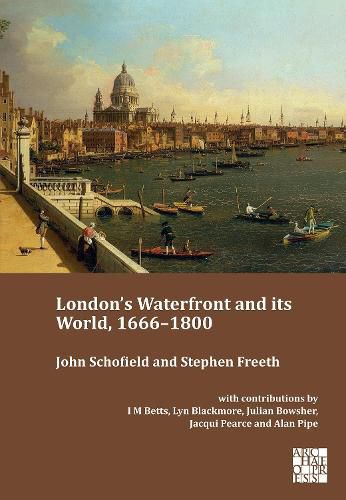Readings Newsletter
Become a Readings Member to make your shopping experience even easier.
Sign in or sign up for free!
You’re not far away from qualifying for FREE standard shipping within Australia
You’ve qualified for FREE standard shipping within Australia
The cart is loading…






London's Waterfront and its World, 1666-1800 presents the results of archaeological excavations of 1974 to 1983 in the central waterfront area of the City of London. The archaeology of the port of London is considered on a wide scale, from the City down the Thames to Deptford. The Great Fire of London in 1666 prompted some changes to the topography of streets and buildings, but there were also many continuities in life and work. The waterfront changed during the 18th century as warehousing replaced houses. This process is illustrated by archaeological excavation, documentary study and the survival of plans of properties surveyed for land-owning institutions. The artefacts and pottery recovered from these sites include many pieces from overseas, and London's waterfront can be compared with those of other port cities in Europe, North America and the Caribbean. Perhaps in late 17th- and 18th-century London we can study urban tastes and consumption from an archaeological viewpoint. During this period London became the hub of the new British empire, but contributed to the exploitation of people from other lands known as slavery. The waterfront on both sides of the Thames was at the centre of the new empire.
$9.00 standard shipping within Australia
FREE standard shipping within Australia for orders over $100.00
Express & International shipping calculated at checkout
London's Waterfront and its World, 1666-1800 presents the results of archaeological excavations of 1974 to 1983 in the central waterfront area of the City of London. The archaeology of the port of London is considered on a wide scale, from the City down the Thames to Deptford. The Great Fire of London in 1666 prompted some changes to the topography of streets and buildings, but there were also many continuities in life and work. The waterfront changed during the 18th century as warehousing replaced houses. This process is illustrated by archaeological excavation, documentary study and the survival of plans of properties surveyed for land-owning institutions. The artefacts and pottery recovered from these sites include many pieces from overseas, and London's waterfront can be compared with those of other port cities in Europe, North America and the Caribbean. Perhaps in late 17th- and 18th-century London we can study urban tastes and consumption from an archaeological viewpoint. During this period London became the hub of the new British empire, but contributed to the exploitation of people from other lands known as slavery. The waterfront on both sides of the Thames was at the centre of the new empire.